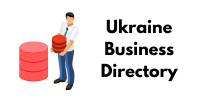The compilation of information and the transmission whatsapp lead of knowledge has always been a central concern in different human civilizations. It is what motivated the emergence of writing or any symbolic representation that allows us to accumulate knowledge and expand our understanding of what surrounds us. At the same time, a database is not the same as a computer application for storing and displaying information, such as a spreadsheet. What differentiates the former from the latter is their level of complexity and the large amounts of data they are capable of managing; all of this without neglecting efficiency in terms of user accessibility.
Database Management Systems (DBMS)
Databases have become a fundamental part of any residence permit holders have company or institution over the last 20 years, from the smallest to the largest. If an organization does not track and analyze all of its data – profits, profitability, efficiency of its marketing campaigns, key growth markers, etc. – it does not compete. Databases allow a business to scale, improve its productivity, evaluate its performance, optimize its resources, facilitate the work of its teams, among others.
OLTP databases
From the English Online Transaction Processing , eu phone number OLTP refers to online transaction processing. Therefore, to the question what is an OLTP database, the answer is one that manages everything that has to do with the structure of users’ transactional data.
It is worth noting that, beyond the types proposed in this post, databases can be categorized in many ways. We can talk about hierarchical databases, when the structure of their data takes the form of a tree. Likewise, several of these tree structures can be related to each other in a graph-oriented database, among other possibilities.
In any case, the factors that lead a company or institution to opt for one paradigm or another are its specific needs and the technological context in which it finds itself. In recent years, for example, we have seen an explosion of data storage and management in the cloud, a trend that is still in its genesis. Self-managed databases are also in vogue, opening up the range of opportunities offered by this technology.
